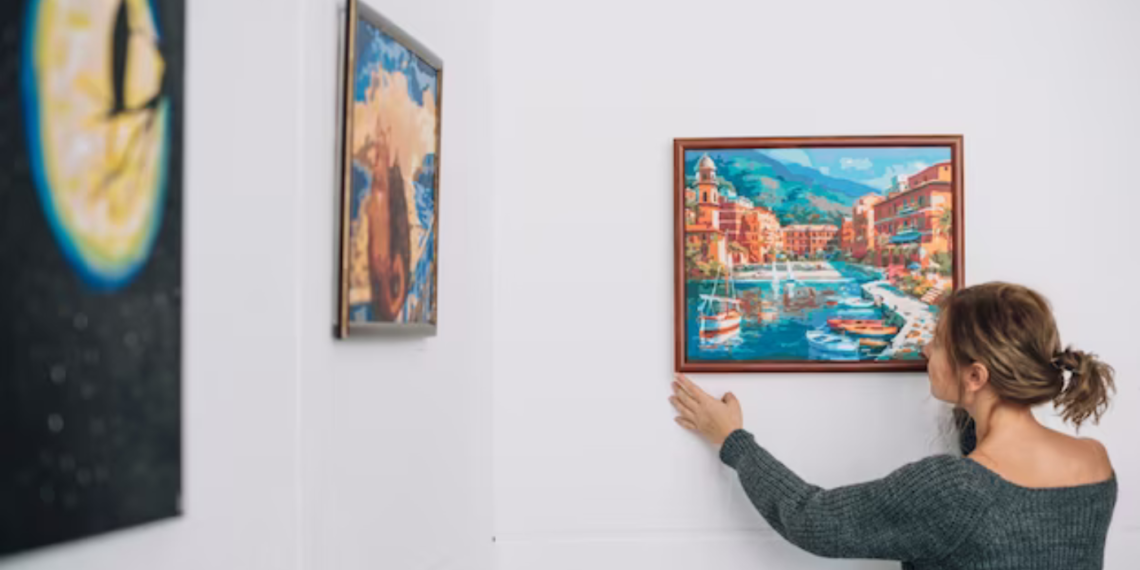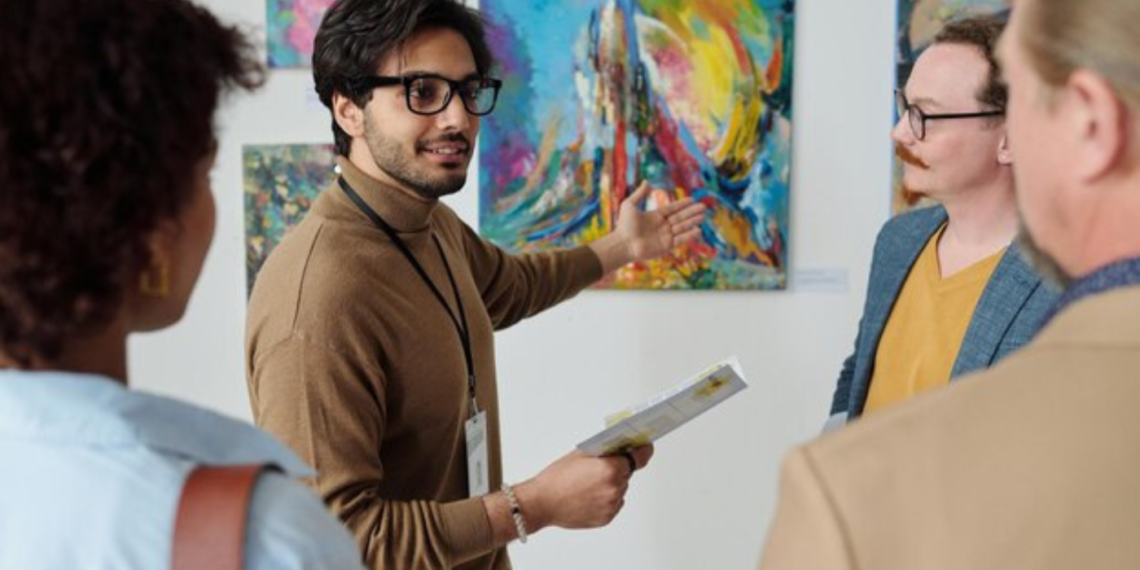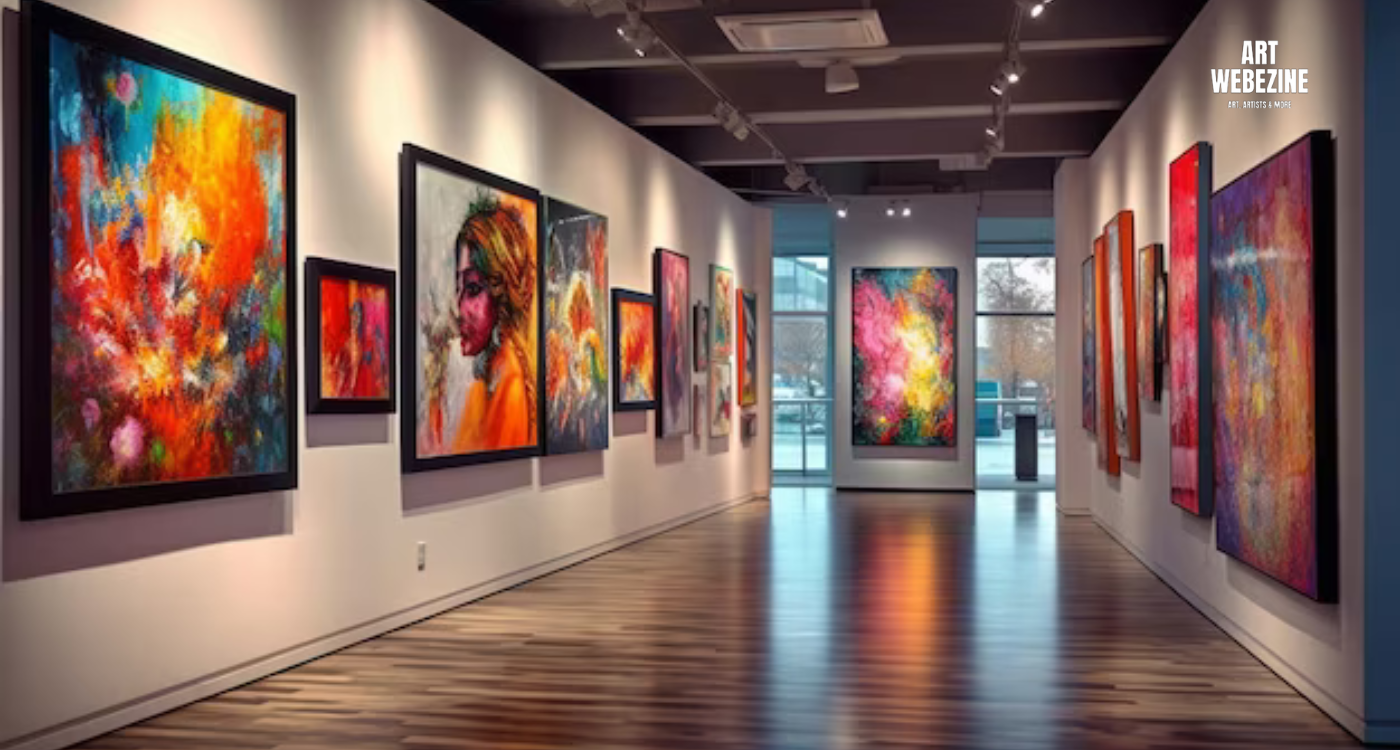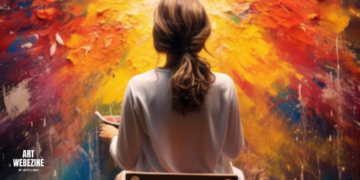Curating an art exhibition is a rewarding experience that allows you to share your passion for art with others. It can be a lot of work, but it is also a lot of fun. The world of art is a realm of creativity, expression, and the exploration of human emotions. As an art enthusiast, you may find yourself drawn to the idea of curating your own exhibition, a platform to showcase the works of talented artists and share your unique perspective with the world.
Embarking on this journey requires careful planning, organization, and a deep understanding of the artistic landscape. This comprehensive guide will equip you with the knowledge and tools to curate an art exhibition that leaves a lasting impression.
What is Exhibition Planning?

Exhibition planning is the process of organizing and executing an art exhibition. It involves a wide range of tasks, from selecting the artwork and venue to designing the layout and promoting the event. The goal of exhibition planning is to create a cohesive and engaging experience for visitors that effectively communicates the theme and message of the exhibition.
How to Curate Your Own Art Exhibition: A Step-by-Step Guide to Creating Your Own Art Show
Curating your own art exhibition can be a rewarding and creative experience, allowing you to showcase your own artwork or the work of other artists. However, creating an art exhibition can be a daunting task, requiring careful planning and attention to detail. In this article, we will provide a step-by-step guide to curating your own art exhibition, including tips on selecting artworks, arranging the exhibition space, and promoting your exhibition.
Conceptualizing the Exhibition: Laying the Foundation
The first step in curating your art exhibition is to establish a clear vision. Define the central theme or idea you want to convey through your exhibition. What message do you want to deliver to your audience? What emotions do you hope to evoke? Once you have a firm grasp of your overall concept, you can begin to identify the artists and artworks that will effectively communicate your message.
Selecting the Venue: A Space for Artistic Expression
The venue you choose for your exhibition plays a crucial role in setting the tone and ambiance for the artworks on display. Consider the size, layout, and accessibility of the space. Will you be showcasing large-scale installations or intimate, intricate pieces? Does the venue have the necessary lighting, temperature control, and security measures to protect the artworks?
Securing Funding: Fueling Your Artistic Vision
Before embarking on your curatorial journey, it is essential to establish a budget and secure funding for your exhibition. Calculate the costs associated with venue rental, insurance, artist fees, marketing, and installation materials. Explore various funding sources such as grants, sponsorships, and crowdfunding campaigns. A well-crafted proposal highlighting the significance of your exhibition can significantly increase your chances of obtaining funding.
Identifying Artists: Unearthing Artistic Gems
The heart of any art exhibition lies in the selection of artists and artworks. Develop a clear set of criteria for selecting artwork, considering factors such as style, theme, and relevance to your exhibition’s message. Research and identify artists whose work aligns with your vision. Attend art fairs, visit galleries, and network with other art professionals to discover promising artists.
Crafting Exhibition Proposals and Artist Agreements: Transparency and Understanding
Once you have chosen the artists you wish to feature in your exhibition, draft comprehensive exhibition proposals outlining the exhibition’s theme, concept, artwork selection, and timeline. Include a detailed budget and marketing plan. Prepare clear and concise artist agreements that outline the terms of their participation in the exhibition, including fees, copyright, and insurance arrangements.
Planning Installation and Logistics: Bringing Art to Life
The physical installation of the artworks is a critical aspect of curating an art exhibition. Work closely with the artists to determine installation requirements such as wall space, lighting, and pedestals. Coordinate the safe transportation and insurance of artworks from the artist’s studio to the exhibition venue. If necessary, hire an experienced art installation team to assist with the physical setup of the exhibition.
- Art Exhibition Setup and Installation: Oversee the installation of artworks, ensuring they are properly displayed and secure.
- Exhibition Lighting and Ambiance: Create a welcoming and engaging atmosphere with appropriate lighting and ambiance.
- Art Exhibition Security and Safety: Implement security measures to protect artworks and ensure safety for visitors and staff.
- Visitor Engagement and Education: Provide visitors with information about the artworks and artists, and encourage interaction and discussion.
- Exhibition Documentation and Archiving: Document the exhibition process and archive materials for future reference.
- Art Exhibition Closure and Evaluation: De-install artworks safely and evaluate the success of the exhibition.
Promoting and Marketing the Exhibition: Reaching Your Audience

To ensure a successful and well-attended exhibition, it is crucial to develop a comprehensive marketing plan. Identify your target audience and tailor your marketing strategies accordingly. Utilize social media platforms, create eye-catching posters and flyers, and distribute press releases to generate buzz around the exhibition. Consider organizing public lectures, workshops, or artist talks to further engage the community and pique interest.
Public Opening and Ongoing Management: Nurturing Your Artistic Vision
The opening reception marks the culmination of your curatorial efforts and provides an opportunity to introduce the exhibition to the public and the press. Plan the event meticulously, considering refreshments, music, and artist talks.
During the exhibition’s duration, regularly monitor the space to ensure the artworks are secure and in good condition. Address any maintenance or security issues promptly. Engage with visitors, answer their questions, and provide them with information about the artworks.
Tips for Exhibition Planning
In addition to the steps outlined above, there are a few other tips that can help you plan a successful exhibition:
-
Start planning early: It is important to start planning your exhibition early, as this will give you ample time to complete all of the necessary tasks.
-
Set a budget: It is important to set a budget for your exhibition and to stick to it. This will help you to avoid overspending.
-
Do your research: It is important to do your research on the theme of your exhibition and on the artists that you are considering exhibiting. This will help you to make informed decisions about the content of your exhibition.
-
Be creative: There are many different ways to plan an exhibition. Be creative and come up with ideas that will make your exhibition unique and memorable.
-
Be organized: It is important to be organized when planning an exhibition. This will help you to stay on track and to avoid making mistakes.
-
Be prepared to compromise: It is important to be prepared to compromise when planning an exhibition. This is because there will be times when you need to make concessions in order to make the exhibition a success.
-
Have fun: Planning an exhibition should be a fun and rewarding experience. Enjoy the process and let your creativity shine through.
By following these tips, you can plan an exhibition that is both successful and enjoyable.
Conclusion
Curating an art exhibition is a journey of creativity, collaboration, and dedication. It requires a deep understanding of art, the ability to identify and nurture talent, and a passion for sharing artistic expression with the world. By following the steps outlined in this guide, you can embark on this enriching experience and unveil your unique curatorial vision to the world. Remember, curating an art exhibition is not merely about displaying artworks; it’s about crafting a compelling narrative that resonates with viewers and leaves a lasting impression on their hearts and minds.





